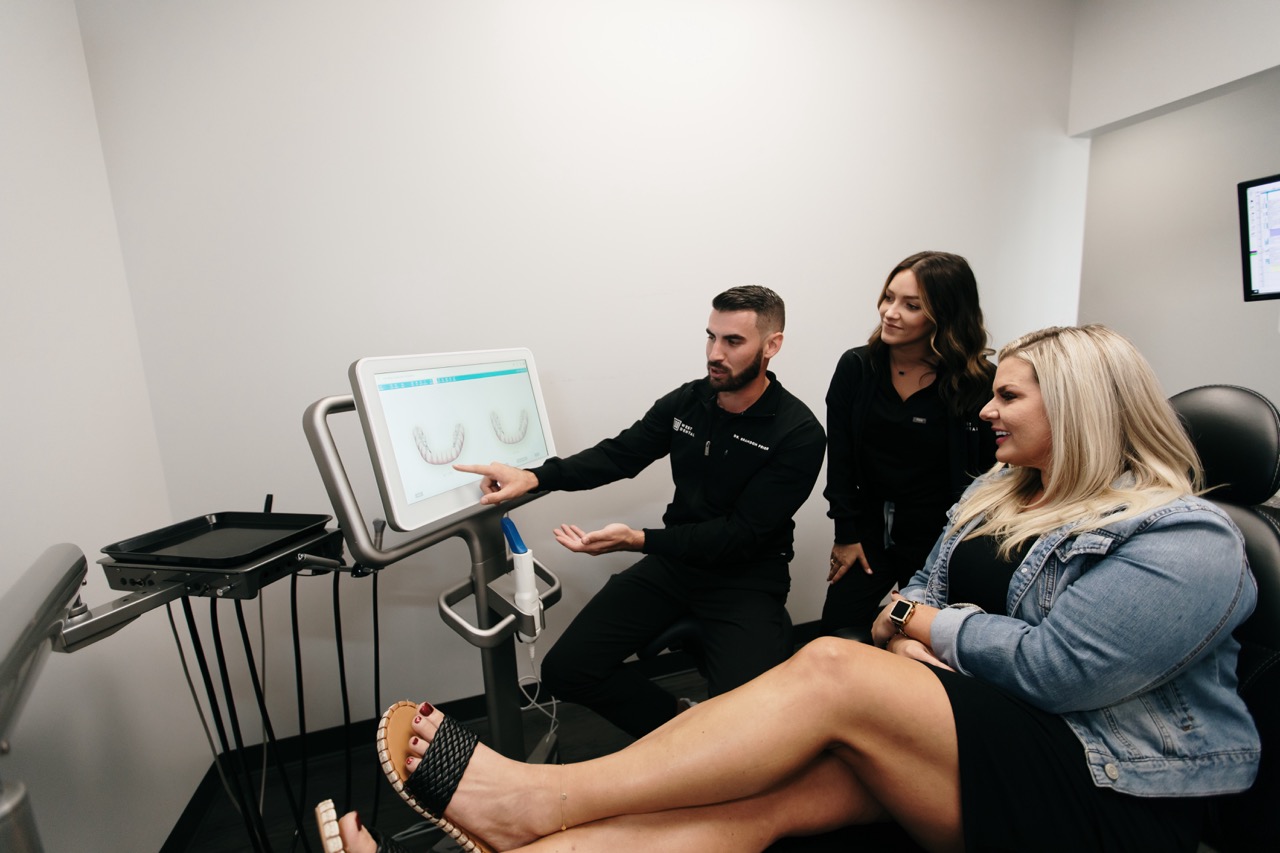A Brief History of Invisalign

The desire for straighter teeth dates back centuries, with early dental care examples from history often focusing on the removal of overcrowded teeth. Today's options for tooth straightening are easier to use than ever before. While many types of traditional metal braces work best for children and teens, modern aligner systems like Invisalign work well for busy adults. It's a short-term treatment program offered by Align Technology and managed by your local dentist, Dr. Prior in Ballwin MO. If you're considering this kind of dental treatment to deal with spacing issues or overcrowding among your teeth, you may want to know more about its history. Explore how these clear aligners became so popular that millions of Americans use them every year to improve their smile.
Invisalign came to life in 1995 when Stanford college student Zia Chisti was wrapping up the end of treatment with traditional metal braces. He had his braces finally removed by his orthodontist only to find out he would need to continue using a plastic retainer to keep his teeth from shifting back into place. That sparked an idea in his mind that led him to experiment with retainers that could be used in place of the braces. This led to the invention of aligners that could be formed from clear plastic, making them nearly invisible. He reached out to dental experts and design partners to explore if these aligners could really do the work of metal brackets and wires. After a few years of testing, it was established that wearing the aligners for most of the day and moving to different fits over the course of a year or two could provide nearly the same results as braces. In most cases, Invisalign retainers do just as much work as traditional braces without the complications that come with them.
While the inventors were working on the product's development as early as 1996, the FDA didn't approve the device for public use until 1998. As of 2024, the system has been used by over 15 million patients. That's a lot of real world testing that has led to numerous revisions and treatment updates since the first Invisalign aligner was shipped out in 1998. Today's Invisalign works better than ever, producing reliable results in a short time frame and with minimal discomfort or disruption to your schedule.
Much like many other breakthroughs in technology, the early efforts of Align Technology took place in a garage in Menlo Park, California. Computer assisted design (CAD) technology was just reaching its full potential in the mid-90s, allowing the inventors to create a streamlined process for capturing patient impressions and transforming them into aligners that create the desired change in alignment. Without this technology, it would have been impractical to produce accurate aligners. Leveraging the power of CAD and 3D modeling also keeps Invisalign cost as affordable as possible for the patients.
One reason that the inventors were motivated to create an alternative to traditional braces is the length of orthodontic treatment. Committing to wearing braces for two, three, or even four years can leave you dealing with food restrictions for longer than you like. Invisalign is often the quickest option your Ballwin MO dentist can provide for improving the alignment of your teeth. Most Invisalign treatments wrap up within 2 years at the most, with some patients needing them for 12 months or less. Your dentist, Dr. Prior, can give you a specific time frame to expect based on the changes you need. Each aligner is worn for around a month, so more extensive changes require longer periods of wear so you can go through a greater number of aligners.
Metal braces are still used today, and they've received upgrades as well like ceramic brackets that better blend into your smile. However, Invisalign continues to grow in popularity as an alternative because it offers a number of benefits to the patient. First, you can start your Invisalign in Ballwin MO without having to visit an orthodontist in most cases. Many dentists that don't offer other orthodontic treatments will still provide Invisalign. You handle most of the treatment yourself by wearing the aligners as close to 23 hours a day as possible. Second, you can slip the aligners off when you want to eat or drink. There's no need for special brushes to clean between your teeth and you don't need to worry about broken wires or loose brackets. Finally, Invisalign is nearly invisible, as the name suggests. The clear plastic fits perfectly to your teeth and can't be seen unless someone gets very close. You can speak clearly with the aligners in, and most patients adapt to them very quickly.
Find out if Invisalign is a good choice for you by scheduling an appointment or virtual consultation with the 100 West Dental team. We'll give you an assessment and help you find the right dental procedures for you!
We'd love to provide you and your family with an unexpectedly awesome dental experience. Call (636) 585-0100 or schedule online to set up your visit. We'll be in touch soon.